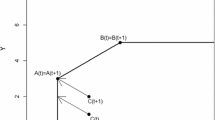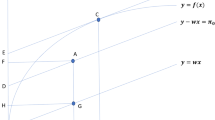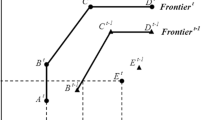Abstract
We propose a simple and intuitive nonparametric technique to assess the profit performances of a single decision-making unit over time. The particularity of our approach lies in recognizing that technological change may be present in the profit evaluation exercise. We partition the periods of time into several time intervals, in such a way that the technology is fixed within intervals but may differ between intervals. Attractively, our approach defines a new Luenberger-type indicator for dynamic profit performance evaluation when a single decision-making unit is of interest, and provides a coherent and systematic way to compare the profit performance changes between the periods of time and the time intervals. To define the interval-level concepts, we rely on a flexible weighting linear aggregation scheme. We also show how the new indicator can be decomposed into several dimensions. We illustrate the usefulness of our methodology with the case of the Chinese low-end hotel industry in 2005–2015. Our results highlight a performance regression, which is mainly due to the technical components of the indicator decomposition.
Similar content being viewed by others
Notes
Introducing the presence of heterogeneity in nonparametric efficiency analysis is not new (Battese et al. 2004; O’Donnell et al. 2008; Walheer 2018a). Previous works have considered the presence of heterogeneity between DMUs, while we present a methodology to capture heterogeneity in terms of technology between time intervals for a single DMU. The suggested methodology thus shares the willingness of incorporating technology heterogeneity in performance evaluation methods with these existing techniques. At this point, we highlight that it is important to justify the number of time intervals chosen. The common practice, previous works, important events, descriptive statistics, or statistical methods (e.g. cluster analysis) may help at this stage. See Sect. 3.1 for an illustration. Window analysis, which suggests a window width of three or four time periods because it tends to yield the best balance of informativeness and stability, may be used as an inspiration for selecting the number of time periods. Finally, one should keep in mind that differences between time intervals are not systematically due to technology changes. The method suggested in this paper can be used to test the correctness of such claims.
Considering a netput representation instead of the more standard input–output representation allows us to considerably reduce our notation. Note that if we denote the inputs by \({\mathbf {x}}_t^n\) and the outputs by \({\mathbf {y}}_t^n\), and their respective price by \({\mathbf {p}}_{x,t}^n\) and \({\mathbf {p}}_{y,t}^n\), the netputs and their price are defined by: \({\mathbf {z}}_t^n = \left[ \begin{array}{c} {\mathbf {y}}_t^n \\ -{\mathbf {x}}_t^n \end{array} \right] \) and \({\mathbf {p}}^n_t = \left[ \begin{array}{c} {\mathbf {p}}_{y,t}^n \\ {\mathbf {p}}_{x,t}^n \end{array} \right] \).
Note that very weak conditions are needed for profit efficiency evaluation (see, for example, Cherchye et al. 2016 for more discussion).
Document ‘Guiding Opinions on Promoting Development of all-for-one tourism’ by the General Office of the State Council, March 2018.
Let us illustrate the concept of netput using our application. Let the number of employees, the number of rooms, and total fixed assets be denoted by \(x_{1}\), \(x_{2}\), and \(x_{3}\), respectively; the total revenue by y. The netput vector is thus giving by \({\mathbf {z}} = \left[ \begin{array}{c} y \\ -x_{1}\\ -x_{2}\\ -x_{3} \end{array} \right] \).
Formally, the weights are defined, in our case, as follows: \(\omega ^n_t({\mathbf {z}}^n,{\mathbf {p}}^n,{\mathbf {g}}_{{\mathbf {z}}^n})=\frac{{\mathbf {p}}^{{n^\prime }}_t {\mathbf {z}}_t^n}{\sum _{t \in n} {\mathbf {p}}^{{n^\prime }}_t{\mathbf {z}}_t^n}.\)
References
Al-Mahish M (2017) Technical change, and total factor productivity growth of the Saudi electricity sector. Int J Energy Econ Policy Econ Scale 7:86–94
Arbelo-Perez M, Arbelo A, Perez-Gomez P (2017) Impact of quality on estimations of hotel efficiency. Tour Manag 61:200–208
Ashrafi A, Kaleibar MM (2017) Cost, revenue and profit efficiency models in generalized fuzzy data envelopment analysis. Fuzzy Inf Eng 2(9):237–246
Assaf AG, Agbola FW (2011) Modelling the performance of Australian hotels: a DEA double bootstrap approach. Touri Econ 7(1):73–89
Athanassopoulos AD, Giokas D (1998) Technical efficiency and economies of scale in state owned enterprises: the Hellenic telecommunications organisation. Eur J Oper Res 107:62–75
Atkinson SE, Tsionas MG (2016) Directional distance functions: optimal endogenous directions. J Econom 190:301–314
Barros CP, Botti L, Peypoch N, Robinot E, Solonandrasana B (2011) Performance of French destinations: tourism attraction perspectives. Tour Manag 32(1):141–146
Battese GE, Rao DP, O’Donnell CJ (2004) A metafrontier production function for estimation of technical efficiencies and technology gaps for firms operating under different technologies. J Product Anal 21:91–103
Bichou K (2011) A two-stage supply chain DEA model for measuring container-terminal efficiency. Int J Shipp Transp Logist 3:6–26
Bjurek H (1996) The Malmquist total factor productivity index. Scand J Econ 98:303–313
Boussemart J-P, Crainich D, Leleu H (2015) A decomposition of profit loss under output price uncertainty. Eur J Oper Res 243(3):1016–1027
Briec W, Kerstens K (2004) A Luenberger-Hicks-Moorsteen productivity indicator: its relation to the Hicks-Moorsteen productivity index and the Luenberger productivity indicator. Econ Theory 23(4):925–939
Caves DW, Christensen LR, Diewert WE (1982) The economic theory of index numbers and the measurement of input, output and productivity. Econometrica 50:1393–1414
Chambers RG (2002) Exact nonradial input, output, and productivity measurement. Econ Theory 20:751–765
Chambers RG, Chung Y, Färe R (1998) Profit, directional distance functions, and Nerlovian efficiency. J Optim Theory Appl 98(2):351–364
Chang H, Mashruwal R (2006) Was the bell system a natural monopoly? An application of data envelopment analysis. Ann Oper Res‘ 145:251–263
Charnes A, Cooper WW, Rhodes E (1978) Measuring the efficiency of decision making units. Eur J Oper Res 2:429–444
Cherchye L, De Rock B, Walheer B (2016) Multi-output profit efficiency and directional distance functions. Omega 61:100–109
Chung Y, Färe R, Grosskopf S (1997) Productivity and undesirable outputs: a directional distance function approach. J Environ Manag 51:229–240
Emrouznejad A, Rostamy-Malkhalifeh M, Hatami-Marbini A, Tavana M, Aghayi N (2011) An overall profit Malmquist productivity index with fuzzy and interval data. Math Comput Model 54:2827–2838
Färe R, Pasurka C, Vardanyan M (2017) On endogenizing direction vectors in parametric directional distance function-based models. Eur J Oper Res 262:361–369
Färe R, Zelenyuk V (2003) On aggregate Farrell efficiencies. Eur J Oper Res 146:615–620
Farrell M (1957) The measurement of productive efficiency. J R Stati Soc Ser Gen 120(3):253–281
Florilo M (2003) Does privatisation matter? The long-term performance of British Telecom over 40 years. Fisc Stud 24:197–234
Fukuyama H, Weber WL (2008) Profit inefficiency of Japanese securities firms. J Appl Econ 11:281–303
Gross MJ, Gao H, Huang S (2013) China hotel research: a systematic review of the English language academic literature. Tour Manag Perspect 6:68–78
Hampf B, Kruger J (2014) Optimal directions for directional distance functions: an exploration of potential reductions of greenhouse gases. Am J Agric Econ 97:920–938
Houtsma J (2003) Water supply in California: economies of scale, water charges, efficiency and privatization, ERSA 2003 Congress August
Huang Y, Mesak HI, Hsu MK, Qu H (2012) Dynamic efficiency assessment of the Chinese hotel industry. J Bus Res 65(1):59–67
Juo JC, Fu T-T, Yu M-M, lin Y-H, (2015) Profit-oriented productivity change. Omega 57:176–187
Kang C-C (2009) Privatization and production efficiency in Taiwan’s telecommunication industry. Telecommun Policy 33:495–505
Laitsou E, Kiriakidis M, Kargas A, Varoutas A (2017) Economies of scale, cost minimization and productivity in telecom markets under economic crisis: evidence from Greece. NETNOMICS Econ Res Electr Netw 18:169–182
Law R, Wu J-L, Liu J-Y (2014) Progress in Chinese hotel research: a review of SSCI-listed journals. Int J Hosp Manag 42:144–154
Li X-G, Yang J, Liu X-J (2013) Analysis of Beijing’s environmental efficiency and related factors using a DEA model that considers undesirable outputs. Math Comput Model 58:956–960
Li Y, Chen Y, Liang L, Xie JH (2012) DEA models for extended two-stage network structures. Omega 40:611–618
Liang L, Yang F, Cook WD, Zhu J (2006) DEA models for supply chain efficiency evaluation. Ann Oper Res 145:35–49
Liu Y, Yang Q, Pu B (2015) The research of internet information services on the impact of tourism decision-making. Open Cybern Syst J 9(1):1840–1845
Luenberger DG (1992) New optimality principles for economic efficiency and equilibrium. J Optim Theory Appl 75:221–264
Mancuso P (2012) Regulation and efficiency in transition: the case of telecommunications in Italy. Int J Prod Econ 135:732–770
Mayer A, Zelenyuk V (2014) Aggregation of Malmquist productivity indexes allowing for reallocation of resources. Eur J Oper Res 238(3):774–785
O’Donnell CJ, Rao DSP, Battese GE (2008) Metafrontier frameworks for the study of firm-level efficiencies and technology ratios. Empir Econ 34:231–255
Parker D (1999) The performance of BAA before and after privatisation: a DEA study. J Transp Econ Policy 33:133–145
Qu X, Zhang HQ, Pine R, Hua N, Huang Z, Cai L-A (2014) Strategic implications of government policies on the future group and brand development of state-owned hotels in China. J China Tour Res 10(1):4–20
Ramaswami B, Balakrishnan P (2012) Food prices and the efficiency of public intervention: the case of the public distribution system in India. Food Policy 27:419–436
Ruiz JL, Sirvent I (2012) Measuring scale effects in the allocative profit efficiency. Socio Econ Plan Sci 46(3):242–246
Sahoo BK, Mehdiloozad M, Tone K (2014) Cost, revenue and profit efficiency measurement in DEA: a directional distance function approach. Eur J Oper Res 237:921–931
See KF, Coelli T (2013) Estimating and decomposing productivity growth of the electricity generation industry in Malaysia: a stochastic frontier analysis. Energy Policy 62:207–214
See KF, Coelli T (2014) Total factor productivity analysis of a single vertically integrated electricity utility in Malaysia using a Törnqvist index method. Util Policy 28(C):62–72
See KF, Azwan AR (2016) Total factor productivity analysis of Malaysia Airlines: lessons from the past and directions for the future. Res Transp Econ 56(C):42–49
Su J-J, Sun G-N (2017) The dynamic evolution and distribution difference of China’s tourism investment scale. Tour Sci 31(1):28–43
Sueyoshi T (1991) Estimation of Stochastic frontier cost function using data envelopment analysis: an application to the AT&T divestiture. J Oper Res Soc 42(6):463–477
Sun J, Zhang J, Zhang J, Ma J, Zhang Y (2015) Total factor productivity assessment of tourism industry: evidence from China. Asia Pac J Tour Res 20(3):280–294
Tohidi G, Razavyan S (2013) A circular global profit Malmquist productivity index in data envelopment analysis. Appl Math Model 37:216–227
Tohidi G, Razavyan S, Tohidnia S (2012) A global cost Malmquist productivity index using data envelopment analysis. J Oper Res Soc 63:72–78
Vaninsky A (2006) Efficiency of electric power generation in the United States: analysis and forecast based on data envelopment analysis. Energy Econ 28:326–338
Varian HR (1990) Goodness-of-fit in demande analysis. J Econome 46:125–140
Walheer B (2018a) Aggregation of metafrontier technology gap ratios: the case of European sectors in 1995–2015. Eur J Oper Res 269:1013–1026
Walheer B (2018b) Disaggregation of the Cost Malmquist Productivity Index with joint and output-specific inputs. Omega 75:1–12
Walheer B, Zhang L-J (2018) Profit Luenberger and Malmquist-Luenberger indexes for multi-activity decision making units: the case of the star-rated hotel industry in China. Tour Manag 69:1–11
Yang Z-S, Cai J-M (2016) Do regional factors matter? Determinants of hotel industry performance in China. Tour Manag 52:242–253
Yang YL, Huang CJ (2009) Estimating the Malmquist productivity index in the Taiwanese banking industry: a production and cost approach. Taiwan Econ Rev 37:353–378
Yang Z-S, Xia L, Cheng Z (2017) Performance of Chinese hotel segment markets: efficiencies measure based on both endogenous and exogenous factors. J Hosp Tour Manag 32:12–23
Zelenyuk V (2006) Aggregation of Malmquist productivity indexes. Eur J Oper Res 174(2):1076–1086
Zha Y, Liang L (2010) Two-stage cooperation model with input freely distributed among the stages. Eur J Oper Res 205:332–338
Zhang H, Cheng Z-D (2014) Efficiency evaluation and regional difference analysis of China star hotels based on data envelopment analysis. Res Dev Mark 30(10):1207–1212
Zhang G-H, Gao J (2017) Research on time-space characteristics and influencing factors of overcapacity in star-rated hotel industry in China. Geogr Geo Inf Sci 33(5):99–105
Author information
Authors and Affiliations
Corresponding author
Additional information
Publisher's Note
Springer Nature remains neutral with regard to jurisdictional claims in published maps and institutional affiliations.
We are grateful to the Editor-in-Chief Rainer Kolisch, the Associated Editor, and the two referees for their insightful comments, which greatly improved this paper. We also thank Linjia Zhang for providing us the data.
Rights and permissions
About this article
Cite this article
Walheer, B. Dynamic directional nonparametric profit efficiency analysis for a single decision-making unit: an aggregation approach. OR Spectrum 41, 1123–1149 (2019). https://doi.org/10.1007/s00291-019-00564-x
Received:
Accepted:
Published:
Issue Date:
DOI: https://doi.org/10.1007/s00291-019-00564-x




